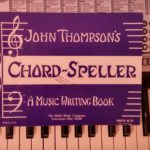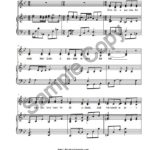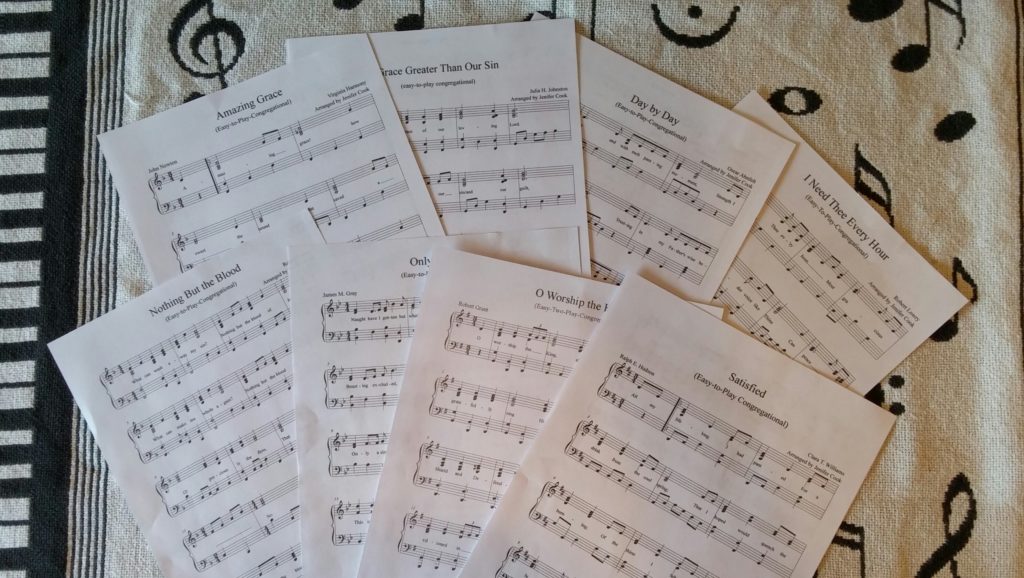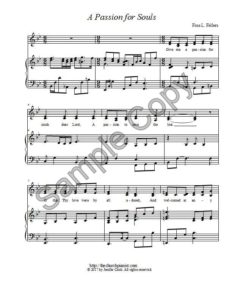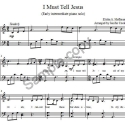Free PDF Hymn! Just When I Need Him Most
August 14th, 2017
I never really noticed the time signature change in “Just When I Need Him Most” until today.
We sang this at our church last night for a congregational and the people REALLY enjoyed singing it. The words are so comforting!
It’s just one of those seasons at our church where there’s a lot of physical needs and such a song reminds us of Jesus’ ever-present help 🙂
We sang this song in a prayerful mood with a slow walking speed so I had time to add left hand flowing patterns similar to the following free pdf of “Just When I Need Him Most”.
Most importantly, notice the key change at the chorus….but the flow will still be pretty much the same 🙂 I actually changed to 6/8 timing one measure earlier than the hymnal shows… because it felt more natural to not hold as long before entering the chorus.
Maybe this will help a beginning church pianist to see what fill-ins could be used for a slow to medium hymn in 6/8 or 9/8 timing… such as my arrangement of “I Must Tell Jesus”.
Warning: This arrangement is NOT intended for piano solo use… due to missing melody notes at the beginning of the chorus…unless of course you know how to add them in 😉
Click on song title for free download: Just When I Need Him Most
Simple Chord Theory Book!
August 9th, 2017Need to brush up on chord theory?
I have a chord speller book by John Thompson that I use to teach my church pianist students who need to brush up on theory.
This book provides foundational information needed for the church pianist to effectively improvise.
Short synopsis of book:
John Thompson’s Chord-Speller
The purpose of this book is to present the Triads (including the Dominant and Diminished Seventh Chords) in a way that will enable the student to read them, write them and recognize them by sight or sound.
Having a working knowledge of scale and chord structure will help the church pianist with improvising hymns.
If you’re interested in seeing sample pages or purchasing the book…just click on the image of the book above.
I’m always looking for simple-approach type books and this one fits the bill! (I don’t get paid to sell this book) 🙂
This book has been around for awhile so you may find it on Ebay or Amazon.
New Sacred Vocal Solo or Duet: A Passion for Souls
July 30th, 2017I have always loved the words to A Passion for Souls by Herbert G. Tovey but have always wished for a different melody.
While looking over the words last week…a melody begin to flow in my head and I quickly penned it to paper.
At first I thought of writing it as a solo but while singing through it with a friend I soon realized a harmony part would be nice 🙂
My friend and I sang it this morning at church. Here’s the video.
I’ll be out of town this coming week but plan to publish it when I return.
Easy to Play Congregational Collection One is Ready!
July 29th, 2017
Just published the Easy to Play Congregational Collection One today! I will be out of town this upcoming week but will supply video or audio samples for this collection when I return.
Here’s a visual sampling of the Collection
Easy-to-Play-Congregational Collection Update
July 26th, 2017New Mission’s or Invitation Song!
July 24th, 2017So many times I have wanted to play “A Passion for Souls” for the invitation but not many people know this song…at least not in our church. The melody is ok but felt like it needed a face-lift.
I like to play familiar songs during invitation…hymns that the people know since I play background music during invitation. (I miss the days of hearing the congregation sing during invitation).
Back to topic! I thought…if I could re-work the melody on this song…maybe it would revive a long lost hymn…at least for our church 🙂
So…a new melody to “A Passion for Souls” flowed out of my mind during a recent spurt of inspiration last week. Hope the song is a blessing to you.
I’m singing it as a duet with a friend this Sunday morning. (The arrangement can either be a duet or solo) I’ll share a video of the duet asap.
Here’s a sampling of sheet music for “A Passion for Souls” which I will publish next week. (Click on image below for larger view)
What I’m Working On…
July 22nd, 2017Every now and then I have a splurge of music ideas run through my head. Last week was one of those times. The results: an early intermediate piano arrangement of “I Must Tell Jesus” and a new melody for an old hymn “A Passion for Souls”. (Here’s a sample of the new tune)
At the time of my overwhelming inspiration, I was in final editing stage on “Jesus Paid it All” ladies two-part arrangement, “Nearer My God to Thee” adding violin bow marks….thanks to help from one one of my violin friends… Abby Phillips AND an updated version of my advanced piano arrangement of “Abide With Me” written as I performed for the recent Composer’s Symposium.
Just so you know…silence doesn’t mean I’m not writing 🙂
Part Two: Modulating up a Fifth
July 21st, 2017Modulating between hymns during a prelude or other background music event can create a seamless presentation.
The absence of this art makes for a disjointed sound when going from hymn to hymn. (unless of course the songs are in the same key) 🙂
Ah….but just because the songs are in identical keys doesn’t mean the songs will always sound seamless without some type of transition. (another lesson!)
Every church pianist should try and learn the art of modulation to the best of his or her ability…in small bits at at time. For starters, learn to modulate between songs with same time signature as I have provided below. (The modulations will feel/flow a little different in 3/4 time versus 4/4 time.)
Below is a free pdf showing how to modulate up a fifth using the chord formula: ii7 to V7 of the new key. I’ve also shared a list of these two chords in the keys found on the free pdf of modulations.
Key of C
ii7 = D-F-A-C
V7 = G-B-D-F
Key of G *see visual of these 2 chords HERE
ii7=A-C-E-G
V7= D-F sharp-A-C
Key of D
ii7= E-G-B-D
V7= A-C sharp-E-G
I Must Tell Jesus : New Early Intermediate Piano Solo
July 19th, 2017One of my former piano students approached me at church a couple months ago and asked if I would write her an offertory arrangement of “I Must Tell Jesus”.
Well…I finally got around to it! 🙂 But what a surprise! This arrangement just flowed out of my little brain this week and I quickly penned it to paper. It’s not always that easy for me to arrange a hymn!
I tried to arrange this piano solo well within her early intermediate level…hoping she could learn it soon. Even though I’m an advanced pianist…I wouldn’t mind playing this for offertory.

